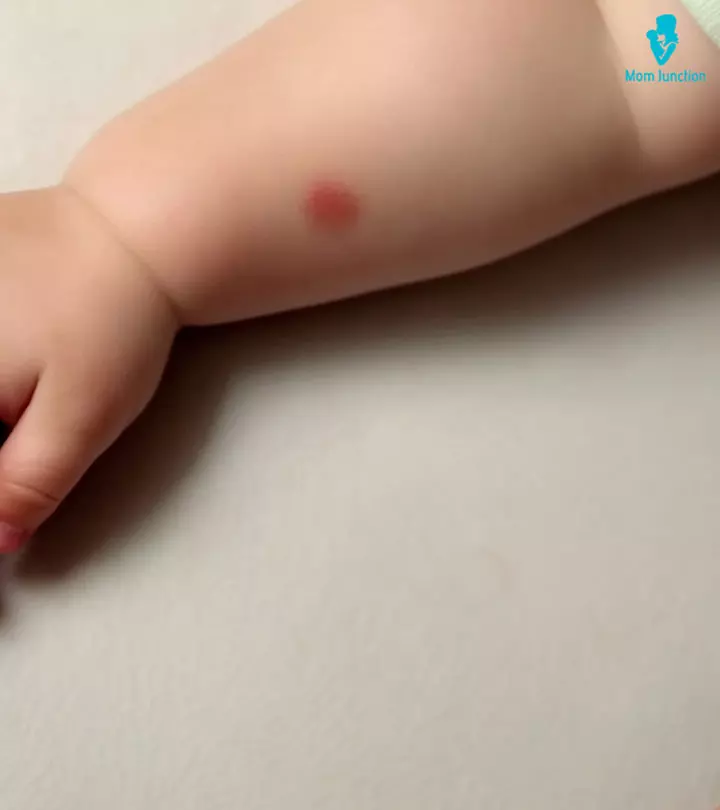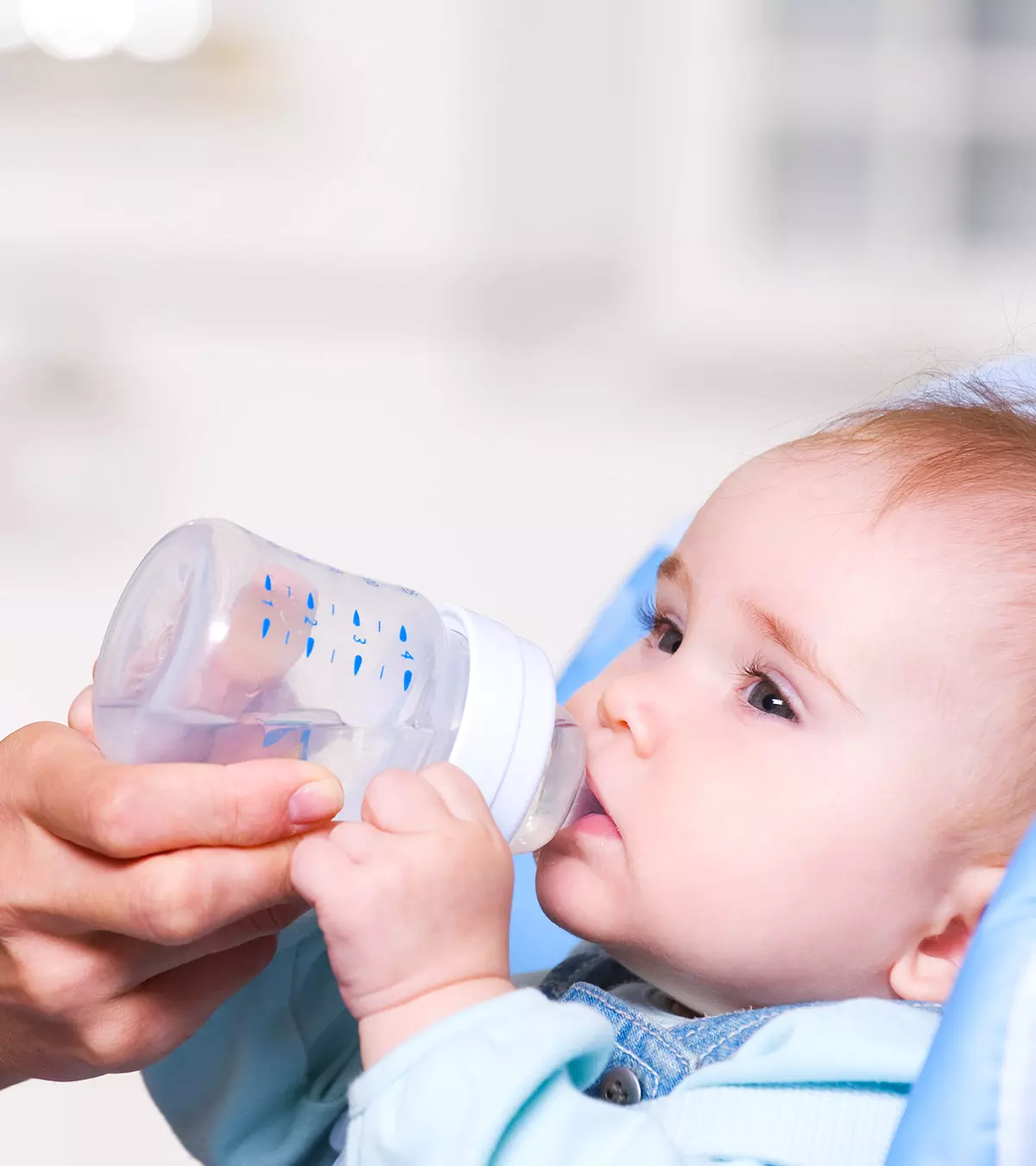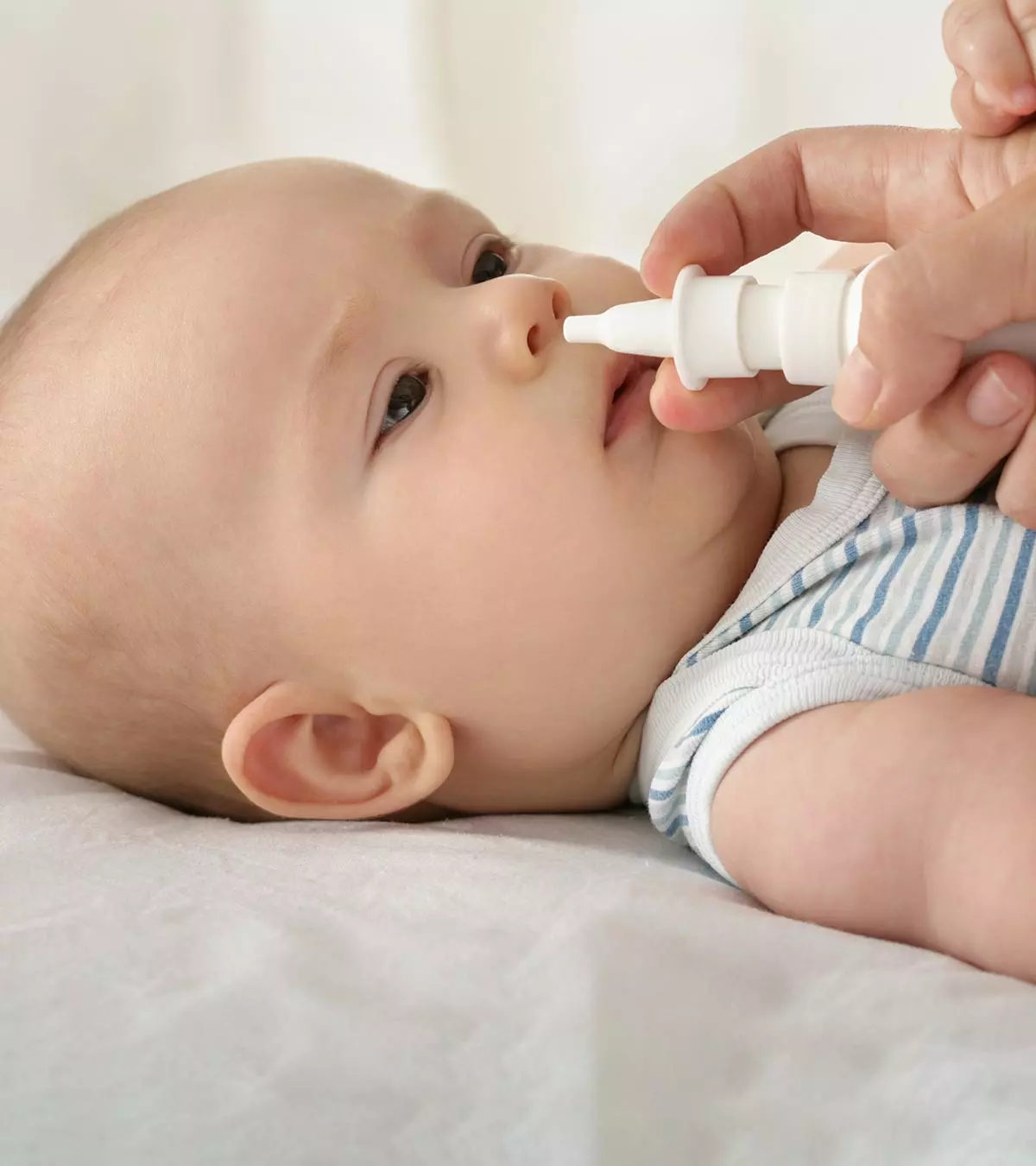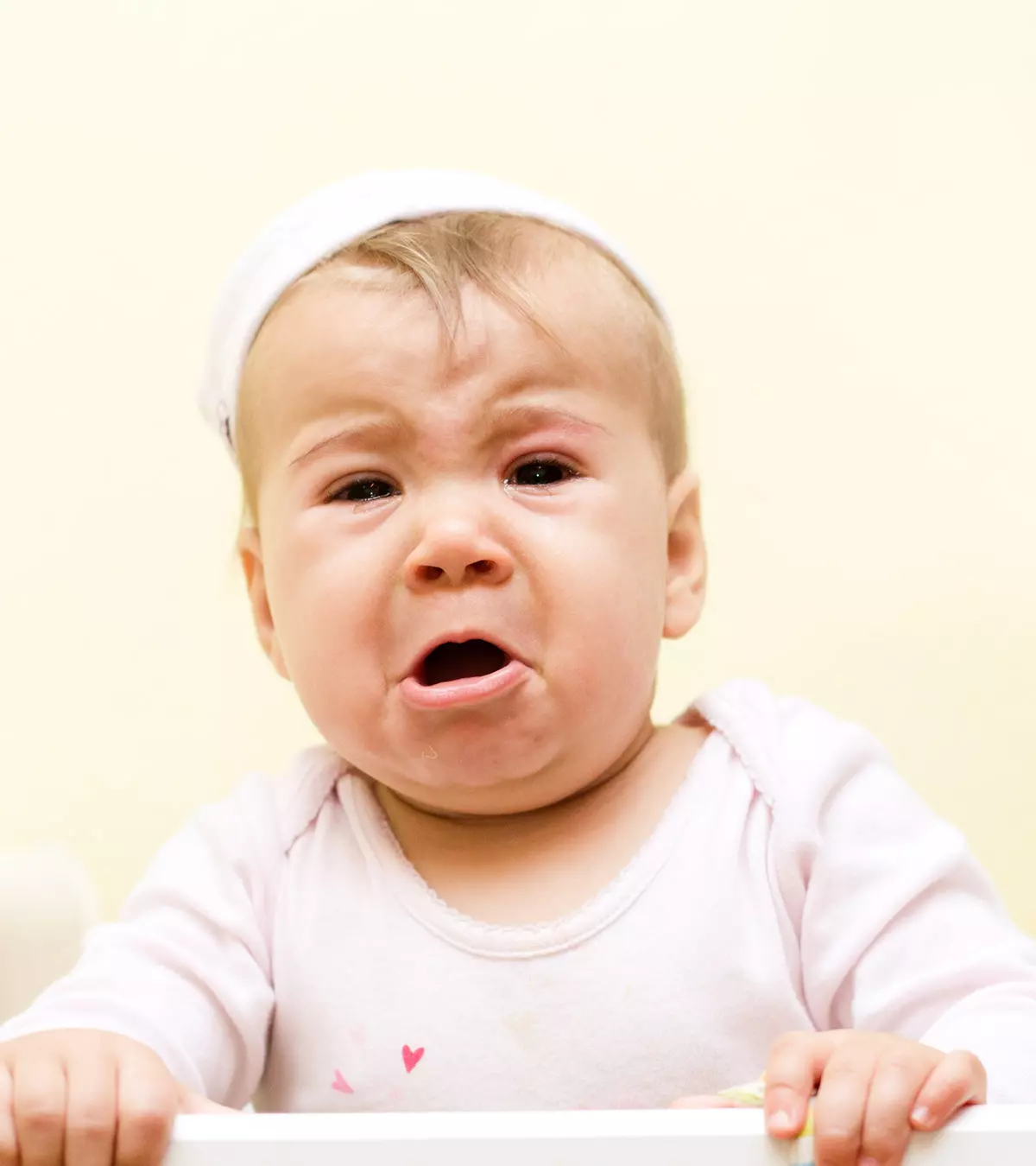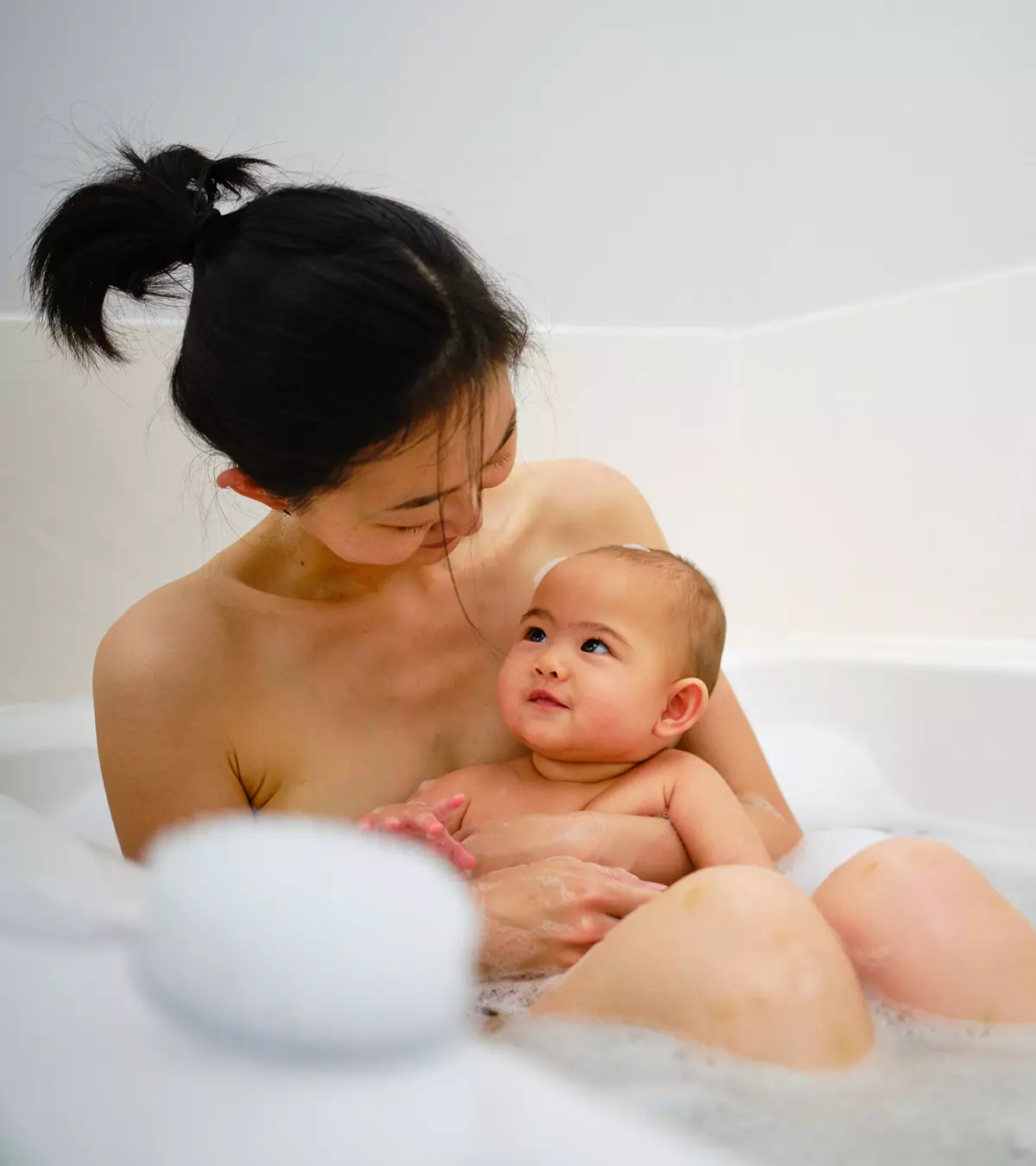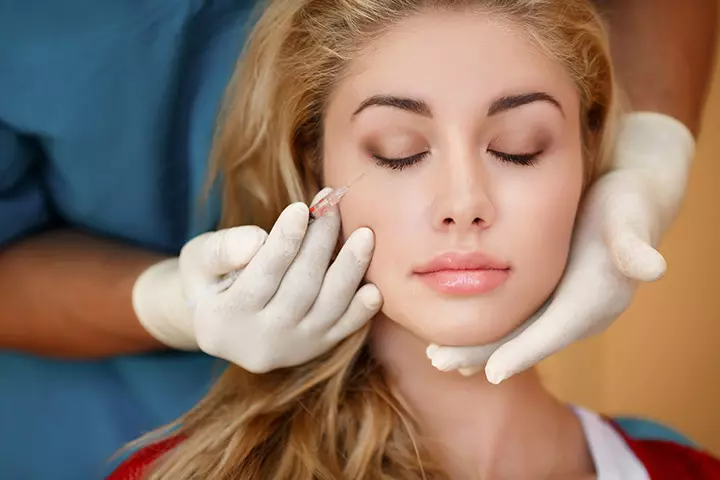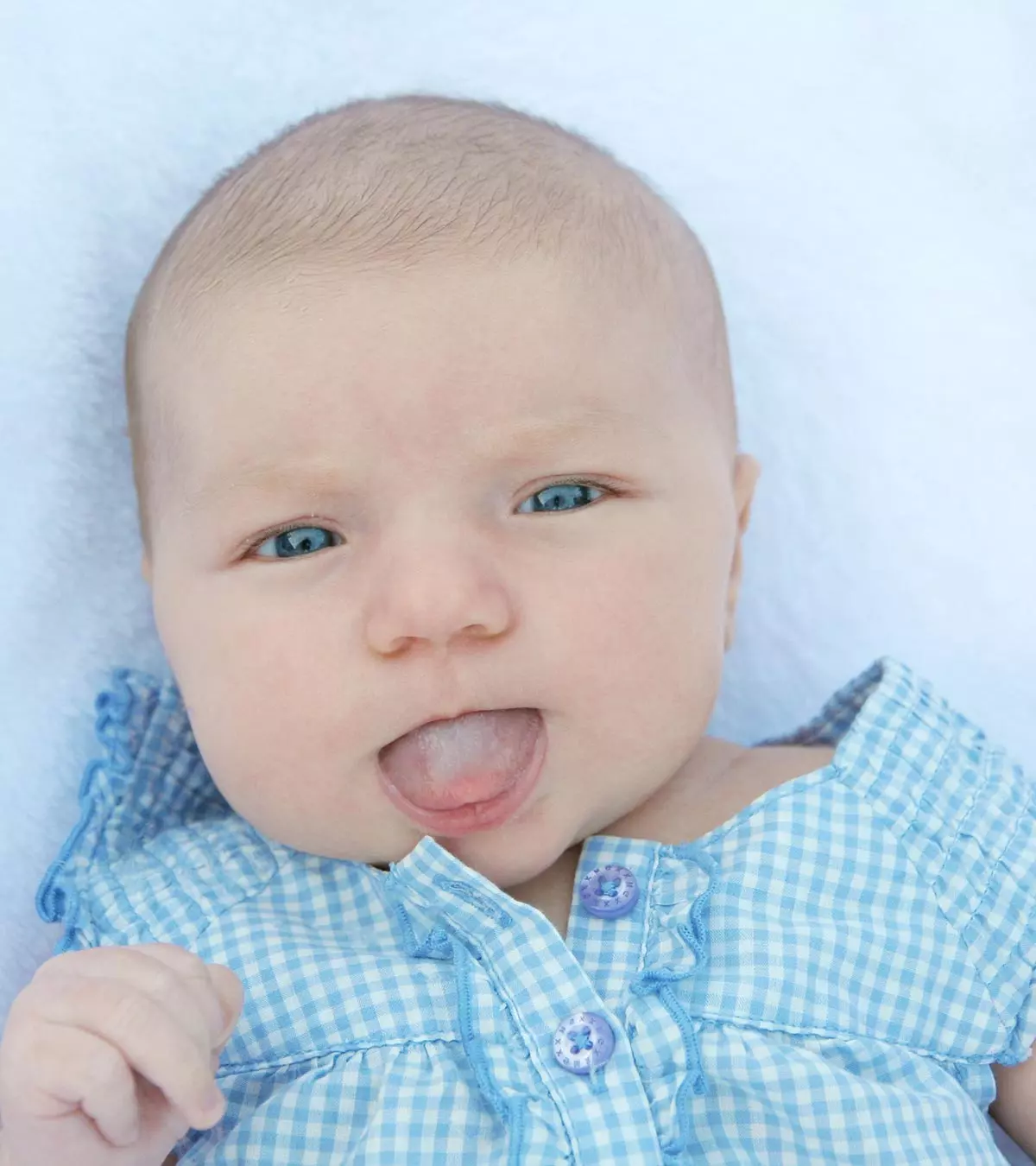
Image: Shutterstock
Oral thrush in babies is a bacterial infection of the mouth that can sometimes be seen in the crotch and buttock region, leading to diaper rashes. It results in white patches that can cause considerable discomfort. Infants of varying ages may be affected by it and can be treated safely upon timely diagnosis. So, here’s all the information you need about thrush, including its causes and treatment in babies.

Key Pointers
- Thrush is a fungal infection in babies caused by a yeast called Candida, which can affect the mouth or diaper area.
- Babies can contract thrush through transmission from the mother during birth or exposure to the fungus in the air.
- Risk factors for thrush in babies include antibiotics, preterm birth, a weak immune system, and a mother with a chronic yeast infection.
- Symptoms of thrush in babies include a sore mouth, yellowish-white pustules, redness around the lips, and diaper rash.
- Thrush can be diagnosed through inspection, culture, or biopsy and treated with antifungal medication and good hygiene practices.
What Is Thrush In Babies?
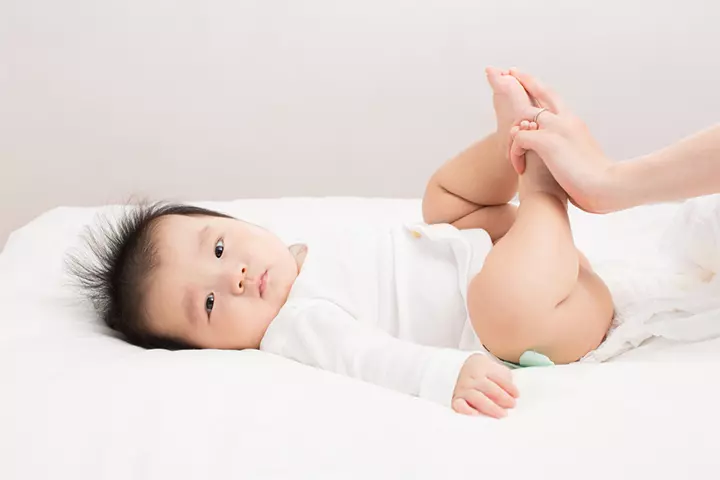
Thrush, also known as candidiasis, is a fungal infection caused by a type of yeast called candida (1). Thrush can be oral (oral candidiasis) or diaper rash thrush.
The fungus usually affects the oral cavity, including the lips and parts of the throat. It also affects the skin, especially near the genitals and the bottom where it is warm and moist, causing yeast diaper rash, also called candida diaper rash or nappy thrush.
How Do Babies Get Thrush?
Candida albicans is naturally found in the environment. During childbirth, a mother can transfer this yeast to the baby’s body through the birth canal. Alternatively, the baby’s skin can get exposed to the fungus in the air.
The fungus eventually proliferates to different parts of the body, such as the mouth and gastrointestinal tract and continues to thrive with good bacteria found within the body (2).
Usually, the yeast does not cause any harm, but in some situations, when the baby is exposed to excessive amounts of Candida albicans (contact with infected people), it could result in thrush.
This also happens when the good bacteria and the body’s immune system are unable to regulate the existing candida population, resulting in an outburst. The immune system may fail to control the growth of this yeast due to several reasons.
What Conditions Cause Thrush In Babies?
While Candida is a naturally occurring organism in the body, certain conditions can lead to an overgrowth, resulting in thrush. The following are the likely causes of thrush in babies (3) (7).
- Vaginal thrush in mother during delivery. The baby may acquire candida bacteria from the mother during vaginal birth if she has an undiagnosed infection.
- Babies on antibiotics for a long duration. Antibiotics attack all types of bacteria, including the good ones that control fungi like candida. A baby on an antibiotic course may have fewer healthy bacteria and is more prone to oral thrush.
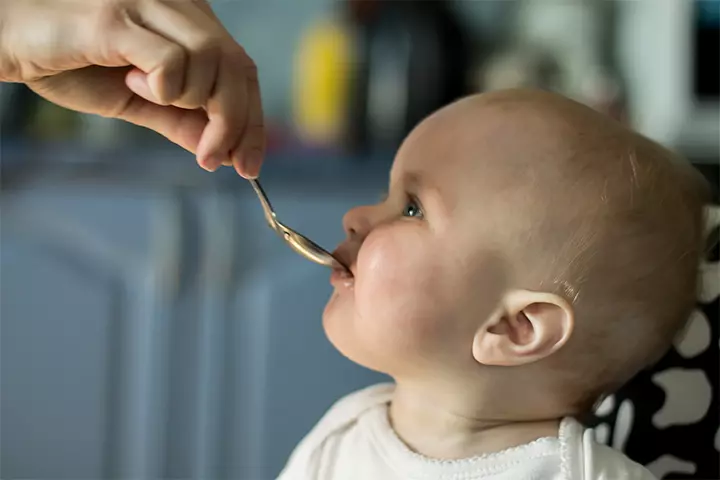
- Lactating mother on antibiotic treatment. Even if the breastfeeding mother is on an antibiotic, the baby is susceptible to the infection.
- Wearing wet diapers for a long time. Wearing a soiled diaper for a long duration can increase the chances of a fungal yeast infection in the diaper area.
Some infants are more susceptible to thrush than the others. Read on to know why.
Why Are Some Babies At A Greater Risk?
Some babies are more susceptible to developing thrush due to various factors that affect their immune system, health, and environment. The following situations increase the chances of oral and diaper thrush in babies (3) (7) (12).
- Preterm infants: Premature babies have underdeveloped immunity and are prone to infections like thrush.
- Babies suffering from immune system diseases: Infants with HIV/AIDS have compromised immunity that leaves them at a greater risk of infections such as thrush.
- Infants on medicines for immune system: Infants on medications such as corticosteroidsiA group of steroid hormones produced in the adrenal cortex that are used for treatments in synthetic form to reduce inflammation. for autoimmune diseasesiDiseases in which the body’s immune system attacks the healthy cells. like asthma are prone to thrush.
- Babies with diabetes: Congenital type-1 type-1 diabetesiA lifelong condition caused by less or no production of insulin leading to high blood sugar levels in the blood. increases the chances of fungal infections in babies.
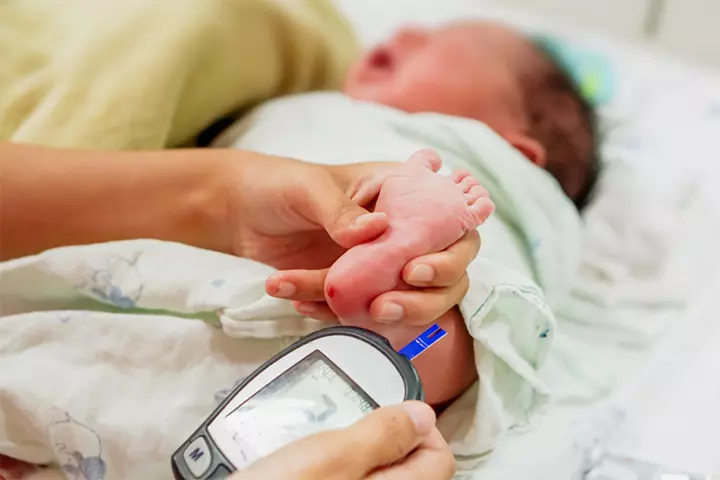
- Mother has a chronic yeast infection: If the mother has chronic thrush or breast yeast infection, then she may repeatedly pass excess candida to the baby via skin contact while breastfeeding. Breastfed infants may catch thrush if the mother has an infected breast nipple. A baby’s developing immune system may not be able to cope with repeated exposures to thrush.
So, how do you identify thrush in babies?
What Are The Symptoms Of Thrush In Babies?
The signs of thrush in babies vary with the type of candidiasis they develop (4) (14). The signs of thrush may not cause noticeable distress in children until it becomes too advanced. Here are a few signs of oral and diaper thrush in babies.
Symptoms of oral thrush in babies

- White to yellowish-white patches on the tongue, lips, inner cheeks, top palate of the mouth and possibly even at the back of the mouth, near the entrance of the throat.
- The patches do not loosen or move when wiped or rinsed with water.
- Causes sore mouth, due to which the baby will have difficulty in feeding.
- Redness around the lips. The tongue may also appear reddened.
- Chronic fussiness and colic due to discomfort caused by thrush.
Symptoms of diaper rash thrush in babies
- Deep red, scaly rashes around the creases/ folds of the skin near the buttocks.
- Scaly, yellowish-white pustules may grow along the rash.
- Red blisters and pink-colored patches appear around the genitals.
- The rashes, especially around the folds, are painful and the baby may squeal when the skin rubs in a fold.
Yeast diaper rash commonly occurs with oral thrush. So check for oral thrush if your baby shows symptoms of fungal diaper rash. Thrush can resolve on its own in a few days, without treatment (5). However, in some cases, the infection may intensify. Since thrush is a fungal infection, it could also spread to healthy skin. Therefore, if you see no improvement in thrush in a few days, take your baby to a pediatrician for diagnosis and treatment.
Rachel Moses, a mother of two, discusses her baby boy’s encounter with thrush, “When he (her son) was about three weeks old, he had a sudden red, angry diaper rash one morning. We tried some cream and aired him out with no diaper. We also noticed that he had some white spots inside his mouth. I got an appointment with the local nurse midwife at the women’s health center the next day. The nurse seemed untroubled by the spots in his mouth; she suggested dipping him in some water with a bit of vinegar mixed in and continuing the airing out of his bottom as we had been. She said that a little bit of yeast is not usually something to worry about unless it was bothering him or interfering with his feeding (i).”
How Is Thrush In Infants Diagnosed?
Thrush in babies is diagnosed using the following methods (6):
- Visual inspection: Your pediatrician can make a positive diagnosis by checking the sores and rashes.
- Microscopic examination: Scrapings of the diaper rash lesions and swabs rubbed on the oral thrush patches are collected for examination. The collected samples are assessed under a microscope to check for the growth of yeast.
- Fungal culture: The doctor will send the samples from scrapings to a laboratory for a fungal culture. This process may take some time, but can accurately diagnose thrush, especially when the baby suffers from other oral or skin conditions that make visual diagnosis difficult.
After diagnosis, the doctor will suggest treatment if required.
 Quick fact
Quick factHow To Treat Thrush In Babies?
The treatment depends on the type of thrush the baby suffers (7). While mild symptoms of thrush in babies may get resolved with some precautions, more severe symptoms that interfere with milk intake may require medical attention.
Treatment for oral thrush:
- Antifungal medications like clotrimazole, nystatin, fluconazole (Diflucan), and itraconazole. Compounds like crystal violet, also called gentian violet, may be prescribed.
- The medicine is in the form of a liquid and can be applied to the affected parts of the mouth using a dropper.
- Put the baby on its back, take the prescribed quantity of medicine in the dropper and put it on the affected parts of the mouth and the throat.
- You can also use a cotton-tip swab to dip in the medicine and apply on parts of the mouth that are hard to reach.
- The medicine is best administered immediately after feeding, or at least 30 minutes before baby feeding. The medicine is no good when it is swallowed, although there is no harm if the baby does so.
You can seek the doctor’s help for the exact method to administer such medicines.
Treatment for diaper rash thrush in babies:
- Doctors prescribe ketoconazole, miconazole, nystatin, naftifine, and clotrimazole cream for this.
- Air-dry the area adequately before application.
- Apply a generous amount of cream to the rash and blisters.
- Leave the area bare for some time before you put the diaper again.
- Apply the ointment multiple times in the day or as per the doctor’s instructions.
Thrush in babies often resolves within two weeks after commencement of treatment. However, home care helps the baby recover quicker.
How To Care For The Baby’s Thrush At Home?
While the baby undergoes treatment, you should take optimum care of the infant at home. Here are some parenting tips on how to care for and manage the baby’s thrush at home (8) (15).
- Breastfeed for no more than 20 minutes each time: The first challenge with oral thrush is breastfeeding. You can limit breastfeeding to 20 minutes per session to ensure that the baby gets to suckle but with minimal discomfort.
- Try using a spoon, cup or syringe to feed: If your baby predominantly feeds from a bottle, then use a spoon to feed the baby. A plastic feeding syringe may also be used to feed formula to the infant. Older infants can be encouraged to have milk and purees from a sippy cup. Sterilize bottle, spoon, syringe, and reusable nipples for at least ten minutes before using them for the baby.
- Switch to liquid foods: Younger infants are anyway on a diet of milk. In case of older infants who eat solid food, switch to semi-liquid purees and porridge to make eating easier.
- Limit pacifier usage: Pacifier should be avoided as they can exacerbate the thrush and may also spread it to different parts of the mouth. Even if you have to use a pacifier, as a last resort, wash and sterilize it after every use.
- Take the diaper off several times a day: Let the baby go without diapers for a few minutes every day. Airing the affected areas of the skin can help ease the condition.
- Change diapers more frequently: Increase the frequency of diaper changes even if a diaper is not entirely soiled. A diaper can hold the infection, and changing them brings down the sustenance of the fungus around the crotch region.
The above steps also work as effective home remedies for thrush in babies.
What Are The Complications Of Thrush In Babies?
When left untreated, oral and diaper thrush can cause the following complications in infants (9):
- Candida esophagitis: The yeast overgrowth may slowly spread to the esophagus and cause candida esophagitis. It is most common in babies with compromised immunity.
- Candida sepsis: Broken diaper rash blisters may cause the yeast to pass into the bloodstream and lead to candida sepsis, which is an invasive candidiasis. The yeast spreads to several organs of the body causing fever and even multiple organ failures. This condition is most common among preterm infants and newborns with low birth weight.
- Spreads to the other parts of the body: Candida may spread to the other parts of the body like the folds of the skin on the underarms. It may even make the fingernails brittle.
- Secondary bacterial infection from broken rash blisters and some times septicemiaiThe body’s most extreme response to an infection characterized by bacteria entering the bloodstream. (bacterial infection in bloob).
Healthy infants seldom develop complications when they get timely treatment. Nevertheless, prevention is always better than cure.
How To Prevent Thrush In Infants?
Preventing thrush is about avoiding the triggers that cause candida overgrowth. Here is what you can do to prevent oral thrush and diaper rash thrush in infants:
- Use antibiotics only if necessary: Antibiotic use should be limited or should be the last resort for both the baby and the mother. In most cases, a pediatrician may not prescribe an antibiotic to a baby unless necessary. However, the lactating mother has to make sure she avoids antibiotics herself to prevent their transfer to the baby through breast milk.
- Sterilize pacifiers and bottle nipples: Pacifiers and bottle nipples can harbor bacteria as well as fungus. After every use, sterilize bottle nipples and pacifiers by boiling them in water for 10 minutes. Follow this baby hygiene ritual every day.
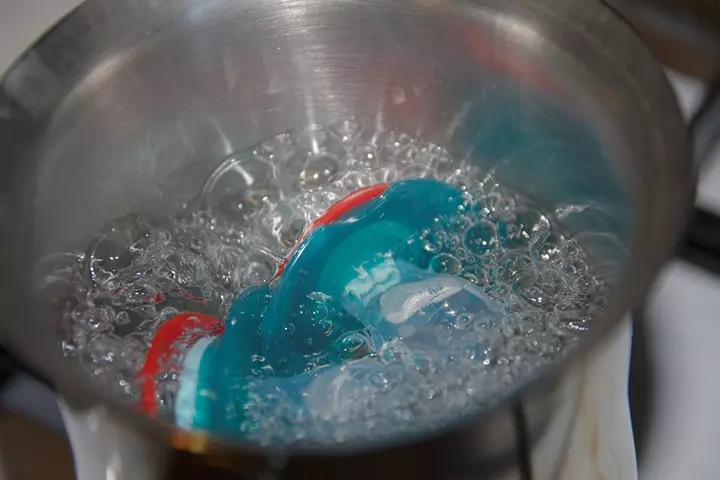
 Quick tip
Quick tip- Keep the baby’s crotch and diaper area dry: Change diapers frequently without waiting for them to get soiled to the brim. Also, clean the buttocks and the genitals with a clean, dry cotton cloth before putting on a new diaper. Let the baby play around without a diaper for an hour every day.
- Keep the baby away from those with thrush: Thrush is contagious and can spread from one individual to another. Keep the baby away from those in the family who have thrush. Let the baby not be kissed or touched by those with thrush. Also, make sure the baby’s items like a pacifier or a bottle nipple are not used or touched by a sibling who has thrush.
- Mothers role is vital in treating thrush: If the mother suffers from thrush, then she should get immediate treatment to prevent spreading it to the baby. Nipples, which come into direct contact with the baby’s skin, can be the carriers of the infection. If you suffer chronic soreness and redness around your nipples, do not overlook it. Get it checked by a doctor immediately.
If your baby is premature, suffers from autoimmune conditions, or has compromised immunity, then you need to be extra careful about the hygiene you maintain around him. General cleanliness becomes even more vital in such cases.
Below, we answer some more questions on thrush in babies.
Frequently Asked Questions
1. Are there any natural remedies for thrush in babies?
No. There are no natural remedies that are safe for infants with thrush. Experts recommend against using remedies like coconut oil, baking soda, thrush baby wipes, or any other over-the-counter medicine to cure thrush in infants. Homeopathic remedy for thrush does exist, but no reliable scientific evidence points towards its effectiveness in treating infants with this infection (10).
2. Can I use yogurt to treat thrush in babies?
Probably yes. Probiotics like yogurt contain lactobacillus, which are good bacteria that can help subdue the population of the yeast. A doctor may suggest or recommend giving an older infant yogurt to introduce the good lactobacilli into the body.
Consumption of yogurt does not precisely treat thrush, but aids in improving the rate of recovery. Along with yogurt, you will have to continue using conventional medicines for treating thrush.
3. What is the difference between oral thrush and milk tongue?
There are times when you may notice thrush-like white spots on the baby’s tongue. However, if you can wipe it away cleanly using a damp cloth, then it is just the residue of milk and not thrush. Thrush cannot be wiped away with a cloth.
4. Can thrush go away on its own in babies without treatment?
Yes, thrush can go away on its own, without treatment. However, it is best to visit a doctor if you suspect the baby has thrush, to avoid risk. Also, babies have an underdeveloped immune system that may not effectively deal with the fungal infection, which makes treatment essential more often than not.
5. Can adults get thrush from babies?
Yes. Primary caretakers of the baby run the risk of catching thrush from the baby, while the risk is the highest for the breastfeeding mother.
6. Can I breastfeed my baby who has thrush?
Yes. But you must take precautions to prevent catching thrush yourself. Always wipe the breast nipple clean with saline water or a disinfectant after every feed. You can also apply an anti-fungal cream to your nipple as a precaution, but only after doctor’s consultation (11).
7. What to do if the baby has recurrent thrush infection?
Recurrent thrush infection could be an indicator of compromised immunity or an autoimmune disorder. If the baby’s infection recurs and does not subside even after medical treatment of two weeks or more, get the baby checked by the doctor for further diagnosis.
8. Is thrush in babies harmful?
Thrush in babies is generally harmless and can heal on its own. However, babies have a developing immune system, due to which it is advisable to take necessary care to prevent any complications (3).
9. Can formula-fed babies get thrush?
Thrush is common in children and can have multiple causes. However, a predominant cause is yeast and floating fungus which gets settled on the feeding bottles and can be passed on to the baby during feeding. Sterilization before feeds helps remove this yeast accumulation from the nipple of the bottles.
10. Do babies with thrush cry a lot?
Infants with thrush rarely feel anything at all. However, some can get fussy due to the discomfort that the infection causes. In addition, children can exhibit crying behavior in rare cases of excessive soreness or pain that can be caused due to complications (such as candida esophagitis or sepsis) and diaper rash thrush (3).
11. How long does it take for thrush to go away in babies?
With treatment, the thrush heals within four to five days. However, untreated thrush takes two to eight weeks to heal (13).
Oral thrush and diaper rash thrush can disappear with timely and effective treatment and are rarely dangerous. Maintaining good oral hygiene and baby mouth care can prevent your baby from contracting thrush. Furthermore, as your baby grows older, their immune system improves and becomes robust, controlling the yeast population and reducing the risk of a thrush infection. You can also care for your baby’s thrush and maintain infant oral health at home by not breastfeeding for more than 20 minutes, switching to liquid foods, limiting pacifier usage, and changing diapers more frequently. With the right precautions and pediatric care, your baby may recover within two weeks.
Infographic: Home Care Tips For Babies With Thrush
Thrush is a common condition in babies. Although typically harmless, oral or diaper thrush may be painful when in contact with foods or a cloth. So if your baby is experiencing similar discomfort, learn how to care for them to minimize their discomfort without compromising their health. Illustration: Momjunction Design Team
Illustration: What Is Thrush In Babies? Causes Symptoms And Treatment

Image: Dall·E/MomJunction Design Team
Learn how to efficiently treat thrush in babies using simple procedures. Learn helpful advice on prevention and treatment to ensure the comfort and well-being of your baby.
Personal Experience: Source
MomJunction articles include first-hand experiences to provide you with better insights through real-life narratives. Here are the sources of personal accounts referenced in this article.
Thrush;https://rachelmoses.wordpress.com/2011/10/25/thrush/
References
- Candidiasis Basics
https://www.cdc.gov/candidiasis/about/index.html#:~:text=Candidiasis%20in%20the%20mouth%20and,organs%20or%20bloodstream%20(candidemia). - Oral thrush (mouth thrush); NHS
https://www.nhs.uk/conditions/oral-thrush-mouth-thrush/ - Thrush in newborns; Mount Sinai.
https://www.mountsinai.org/health-library/diseases-conditions/thrush-in-newborns - Diaper Rash; University of Chicago
https://pedclerk.uchicago.edu/ - Thrush in newborns; National Library of Medicine
https://medlineplus.gov/ency/article/007615.htm - Thrush and Other Candida Infections; American Academy of Pediatrics
https://www.healthychildren.org/English/health-issues/conditions/infections/Pages/Thrush-and-Other-Candida-Infections.aspx - Thrush and Yeast Infections; Nationwide Children’s Hospital
https://www.nationwidechildrens.org/conditions/thrush - Thrush; Seattle Children’s Hospital
https://www.seattlechildrens.org/conditions/a-z/thrush/ - Julie Delaloye and Thierry Calandra; (2014); Invasive candidiasis as a cause of sepsis in the critically ill patient; NCBI
https://www.ncbi.nlm.nih.gov/pmc/articles/PMC3916370/ - Homeopathic Medicine Yeast Relief Plus; Dailymed
https://dailymed.nlm.nih.gov/dailymed/drugInfo.cfm?setid=6c8be78b-b7a5-4527-a38d-efad30d2b787 - Breastfeeding and thrush; NHS
https://www.nhs.uk/conditions/baby/breastfeeding-and-bottle-feeding/breastfeeding-problems/thrush/ - Oral Thrush; Nemours
https://kidshealth.org/en/parents/thrush.html - Thrush; Seattle Children’s Hospital
https://www.seattlechildrens.org/conditions/a-z/thrush/#:~:text=With%20treatment%2C%20thrush%20usually%20clears - Thrush Infections in Babies; Penn Medicine Lancaster General Health
https://www.lancastergeneralhealth.org/health-hub-home/motherhood/the-first-year/thrush-infections-in-babies - Thrush; Cincinnati Children’s Hospital Medical Center
https://www.cincinnatichildrens.org/health/t/thrush
Community Experiences
Join the conversation and become a part of our nurturing community! Share your stories, experiences, and insights to connect with fellow parents.
Read full bio of Dr. Raashid Hamid
Read full bio of Dr. Ritika Shah
Read full bio of Rohit Garoo
Read full bio of Shinta Liz Sunny





